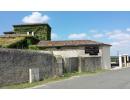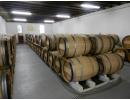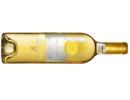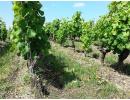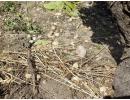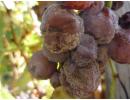Chateau Haut Bommes
Château Haut Bommes - Sauternes
The blend is 95% Semillon and 5% Sauvignon Blanc. The Chateau's single vineyard of 5 ha receive the same care and attention in the vineyard as well as for the winemaking as the 1st Growth Clos Haut Peyraguey who is the same owner. Depending on the vintage up to 5 tries are required to pick the botrytised grapes, which produce on average a low yield of 18 hl/ha from the 40 year old vines. After picking, the grapes are slowly pressed and the juice from each parcel is fermented separately in french oak barrels (50% new) for 2 to 3 weeks at 20-22°C. The wine's residual sugar after the fermentations averages 98g/l depending on the vintage. The wine is barrel aged for 22 months with 50% of new barrels and 50% one year old barrels.
PVins notes: A beautiful golden color, it develops a complex and generous bouquet marked by notes of candied fruit, spice, white flowers and vanilla. The palate is full of fresh fruit, the sweetness is well-balanced by the acidity that carries through the long finish. At least a couple of years of cellaring is recommended upon the wine's release and it will age beautifully over a couple of decades, if you can resist the temptation of drinking it when young.
Château Haut Bommes is located 40 kilometres to the southeast of Bordeaux in the commune of Bommes situated within the Sauternes appellation. The estate has a long history, it remained in the same family for over 160 years. It started in 1850 when Eugène Garbay purchased the estate. later it shared a common history with that of Clos Haut Peyraguey a 1er Cru Classé of Sauternes. In 1914, Eugène Garbay along with Fernand Ginestet purchased Clos Haut Peyraguey, but a few years later Mr. Ginestet sold his shares to the Garbay family. Then in 1926, Eugène Garbay passed on the two Châteaux to his two grand-sons, Bernard and Pierre Pauly which looked after the two estates for many years. In 1969, Jacques Pauly the son of Bernard took over the running of the two Châteaux with his wife until their retirement in 2002.
In 2002, both estates were passed on to Martine Langlais-Pauly the daughter of Jacques, she took over the management of the estates after a career of 25 years in psychiatry. She was happy to returned to her roots at Clos Haut Peyraguey where she grew up watching her grand-father Bernard and great-uncle Pierre tend the vines and work in the cellars with her father. When her father Jacques Pauly aged 75 wanted to retire, having worked ceaselessly and passionately for 50 years, she did not hesitate to accept the challenge after 4 generations of male management of the Garby-Pauly estates. She managed Château Haut Bommes with the same care in the vineyard and cellar as for Clos Haut Peyraguey, she always treated it as a separate entity.
In 2012 a new chapter in the history of the two Châteaux commenced, both estates were sold to Bernard Magrez owner of numerous châteaux in Bordeaux including the famous Château Pape Clément a Cru Classé of Pessac Léognan. Today Bernard Magrez is the only person in Bordeaux to own 4 Grands Crus Classés (Growth wines) in the appellations of Haut Médoc, Saint Emilion, Pessac Léognan and Sauternes.
Château Haut Bommes meaning "high Bommes", is located on one of the highest points of the Bommes commune in the appellation Sauternes at an altitude of about 70 metres. The Château’s 5 ha of vineyard are located between two of Sauternes’s 1st Cru Classé: Château La Tour Blanche and Château Rayne Vigneau, a parcel is also located near the famous Château d’Yquem. The soil is typical of Sauternes made of a variable proportion of sand, gravel and clay. The vineyard is mainly planted in Semillon (95%) with a small portion of Sauvignon Blanc, the plantation density is 6,667 vines per hectare with vines averaging 40 years of age, grass is grown between the rows for a healthy bio-diversity. As a late harvest wine 4 to 5 tries are necessary over a month to enable the botrytis to develop fully on the grapes. Each parcel is handpicked separately knowing that the botrytis develops unevenly throughout the vineyard.
From September to November the wonder of nature comes into play in the area of Sauternes. The area benefits from the influence of a small creek named the Ciron. It originates from the pine forest of "Les Landes" and flows through Sauternes, creating a micro-climate with its cooler waters that flow into the warmer waters of the Garonne river. The difference in temperature between the two waters creates a mist early evening that hangs in the area till morning. The moisture combined with the afternoon sun will promote the establishment and progressive development of the Botrytis Cinerea (noble rot) on the ripe grapes. This fungus will allow the grapes to reach the over maturity sought, concentrating sugars and flavours. The handpicked harvest spreads over October into November needing numerous pickings "tries" depending on the vintage.
From the same producer as the 1st Growth Clos Haut Peyraguey in Sauternes, the Chateau Haut Bommes benefits from the same care and attention in the vineyard and cellar. The carefully handpicked botrytised grapes make up a blend of 95% Semillon and 5% Sauvignon Blanc, producing a low yield of 18 hectolitres per hectare on average. Up to 5 tries are necessary as the noble rot develops unevenly throughout the vineyard. On arrival at the cellar the grapes are slowly pressed a couple of times and the juice from each parcel is fermented separately in oak barrels (50% new) for 2 to 3 weeks at 20-22°c. The wine's residual sugar after the fermentations averages 98g/l depending on the vintage. The parcels are also barrel aged separately for 22 months and blended at the end of the process.
The important element of producing great dessert wines is to find the right balance between the richness and the natural acidity. This balance helps not to produce a wine that feels too rich and syrupy on the palate. Château Haut Bommes usually has a residual sugar of 98 g/l, meaning there is good sweetness without an imposing richness. The wine shows a complexity of flavours and aromas on the nose, supported by a well-balanced and structured palate from the acidity. A couple of years of cellaring is recommended upon release and it will age beautifully over a couple of decades if you can resist the temptation of drinking it when young.
Links: AOP Sauternes-Barsac - Sauternes - Barsac map - Bordeaux map
SAUTERNES - BARSAC
The Sauternes appellation situated within the Graves region is located 40 kilometres south-east of Bordeaux on the left bank of the Garonne river. The appellation covers about 2,270 hectares over five communes: Sauternes, Fargues, Bommes, Barsac and Preignac. Sauternes (1,650 ha) with its famous neighbour Barsac (620 ha), produces some of the greatest dessert wines in the world from botrytis cinerea (noble rot). Here you will find the world’s most famous dessert wine Château d'Yquem, including other famous châteaux that were classified in the historic Bordeaux Classification of " Grand Cru Classé 1855". Although the producers in Sauternes can only use the name Sauternes on their label, the producers in Barsac can choose between the Sauternes A.O.P. and the Barsac A.O.P. The 26 classified châteaux of Sauternes and Barsac account for more than 45% of the area under vine and 70% of the two appellations turnover. In years when the noble rot does not develop, Sauternes producers will often make dry white wines under the generic appellation Bordeaux.
History
As in most of France, viticulture is believed to have been introduced into Aquitania by the Romans. The earliest evidence of sweet wine production, however, dates only to the 17th century. The Dutch presence was very strong in Bordeaux and its surrounding vineyards. It clearly has been shown that they influenced winegrowers in the Barsac area to make white wines with residual sugar but that they did not yet know of the noble rot phenomenon. Interestingly, texts written in 1666 give concise details of the late harvesting techniques used in the Bergerac and Sauternes areas. But the question is had they been affected by botrytis? By the second half of the 17th century, a few truly great wines were already being produced from specific areas. This was especially so for red wines with the famous quartet of Haut-Brion, Latour, Margaux and Lafite. During this same period, in Sauternes, the large estates began to receive recognition in France and abroad for the unique expertise they had developed in the production of botrytised sweet white wines. By the end of the 17th century, about two thirds of what are now the great growths of Sauternes, either had developed or were in the process of creating their vineyards following large scale investments by the local nobility.
The investments continued into the 18th century. Although the main winegrowing area ran parallel to the Garonne river at the beginning of the 18th century, by 1770-1810 it had extended away from the river bank to include the gravely hillsides of Bommes and Sauternes. In 1741, the Intendant of Guyenne described the manner in which the wines were harvested, stating that the owners waited until the grapes were almost rotten and added that picking was carried out several times to give a sweeter wine. This provides a very early confirmation of the presence of the noble rot and the use of selective harvesting. The role of the Sauvage d’Yquem family, (later called Lur-Saluces) owners of Châteaux Yquem, Saint Cricq, Filhot and Coutet, was very important in terms of choosing vineyard sites, introducing the finest white grape varieties and perfecting the techniques for selecting only the most overripe, botrytised grapes. In 1787, Thomas Jefferson, future president of the United States of America, was captivated by the wines of the region when he visited Bordeaux. Up on his return to America, he placed an order with the United States consul in Bordeaux for 85 cases of wines which included sweet wines of Barsac, Preignac and Sauternes to be procured from the Count of Lur- Saluces.
During the 19th century, the wines produced by Yquem, Filhot and Coutet (Lur-Saluces estates) were much appreciated by winebrokers, these superb wines were very quickly in great demand, not only to supply the rich Parisian market but also the royal courts and palaces of central and eastern Europe, where the dynamic Marquis de Lur-Saluces had made them very fashionable. The extent of their success was such that the price per barrel doubled in twenty years. In 1855, during the Second Empire, France hosted the Universal Exhibition in Paris. Each region was asked to exhibit typical examples of their local produce. The historical context was exactly right for the Bordeaux Chamber of Commerce to ask the Winebrokers’ Union to draw up a classification of the greatest wines. The role of a winebroker was, as it is today, to visit the vineyards, taste wine, and help establish fair prices as the brokers are considered honest and unbiased professionals. Only the estates from the Médoc peninsula and one château from the Graves area, Château Haut-Brion, were classified among the red wines. The classification was divided into five categories from 1st Growth down to 5th Growth. For white wines, only the Sauternes and Barsac appellations were considered. Château Yquem was singled out as a unique "Premier Cru Supérieur" in an outstanding category of its own. It was followed by nine 1st Growths and eleven 2nd Growths. Therefore, the classification process appears to have been somewhat stricter in Sauternes with two categories instead of five. The great growths of Sauternes and Barsac were able to take advantage of the publicity brought by the new classification. In 1859, the Russian Tsar’s brother, the Grand Duke Constantine, paid 20,000 francs per barrel for a 1847 Yquem. This was an incredible price four or five times higher than Latour or Margaux. Over the following two decades, Sauternes Growths were often sold at higher prices than the Médoc Second Growths, and even the First Growths on several occasions. Their fame was thus established and this prosperity was shared by the entire appellation. Luckly the outbreak of the phylloxera from 1875 to 1892 spread less quickly in Sauternes than elsewhere in Bordeaux. Once the problem resolved the classified châteaux once again enjoyed several years of record sales and did their best to survive the 1929 depression.
However, in the early 1950’s the future started to look more gloomy, with a worrying loss of interest for white wines and a craze for red wines. The sixties were difficult years, both in terms of the weather and the fortunes of the appellation with the majority of financial investments being put on hold. The revival came in the 1980’s with a very good 1983 and 1985 vintages, an excellent 1986 followed by three glorious 1988, 1989 and 1990 vintages. This come-back can be explained partially by fresh interest shown in great Sauternes and Barsac wines by the national and particularly the international press and by new consumer trends. Luckly for the consumer, the passion, devotion, and spirit of producing high quality dessert wines has been handed down from generation to generation for over a 150 years, even though financial risks are involved due to the local climatic conditions.
Vineyard
The vineyard’s density averages 6,500 to 7,500 vines per hectare. The topography varies from an altitude of 10 to 15 metres in Barsac to 80 metres in the heart of Sauternes near the Château d'Yquem. The characteristic of the Sauternes landscape is made up of gentle slopes, terraces and a plateau. The different soil structures all seat on a substratum of shell limestone dating from the Tertiary era about 20 million years ago. The Barsac area is an alluvial plain with reddish coloured sand and limy soils forming a superficial layer of 0.50 to 2 metres in depth. In the Sauternes area the soils vary from marl or argillaceous sand to enormous layers of gunzian gravel carried by the Garonne river and other tributaries from the Pyrenees and Massif Central during the Quaternary era. These layers of gunzian gravel can be of several metres thick like in the Médoc region. This gravel soil encourages the roots to grow deep into the soils seeking nourishment and they also provide an excellent natural drainage. Gravel soils also help the development of the vines by reflecting sunlight to the leaves and berries and they are also perfect for retaining and radiating heat during the night which helps the ripening process.
This area of Bordeaux also benefits from a magical micro-climate for the botrytis (noble rot) to develop. From September to November nature’s wonder comes into play with the influence of the Ciron tributary that creates a night and morning mist, which dissipates with the afternoon sun. The moisture in the air will encourage the development of the botrytis cinerea (noble rot) on the ripe grapes. The fungus helps dehydrate the grapes to reach the over maturity sought while concentrating the sugars and flavours. This over ripening will result in numerous hand-pickings that are done at the optimum time for each parcel, with yields dropping as far as 7 hectolitres per hectare such as for Château d’Yquem and other top cuvées.
The main grape variety planted is Semillon (70%) followed by Sauvignon Blanc (20%) and Muscadelle (5%). The Semillon has a high resistance to mildew and odium which is an advantage in the area. Once ripe, the beautiful golden bunches with their thick skins will develop the famous botrytis, which grows well on this variety concentrating the sugar in the grains. The botrytis also develops well on the Sauvignon Blanc but the variety is often used for the acidic balance it brings to the wine, therefore sometimes harvested a little earlier. As for the Muscadelle, it is not often used in the blend as it has very poor resistance to odium and grey rot. Sauternes wines are characterised by the balance between the sweetness and acidity, which is very important, considering the residual sugar can reach over 180g/l. Some common flavours include apricots, honey, peaches, white flowers, also toast and vanilla when aged in oak barrels, flavours of iodine are also sometimes present resulting from the shell limestone soils. In general, the wines of Barsac can be distinguished from other Sauternes by being a little drier with a lighter body. Sauternes typically starts out with a golden, yellow colour that becomes progressively darker such as a copper coin as it ages. Some wine critics, believe that only once the wine as reached this copper colour can it start to develop its more complex and mature flavours. Depending on the wine, this maturity may be reached after two or three decades while others may take 50+ years to reach their full potential. Some wines in exceptional vintages will even have a potential to age over a century, such as the famous Château d’Yquem.
Climate
Like most of the Bordeaux wine region, the Sauternes and Barsac area have a maritime climate which brings the viticultural hazards of autumn frost, hail and rains that can ruin an entire vintage. The area benefits from a special local climatic condition which is mainly due to the Ciron tributary. The Ciron creek which originates from the pine forest of "Les Landes", creates a micro-climate with its cooler waters that flow into the warmer waters of the Garonne. In the autumn, when the climate is warm and dry, the different water temperatures between the two at their meeting point produce a mist that descends upon the vineyards from evening to late morning. This condition promotes the development of the botrytis cinerea. By mid day, the warm sun will help dissipate the mist and dry the grapes to keep them from developing a less favorable rot known as the gray rot.



